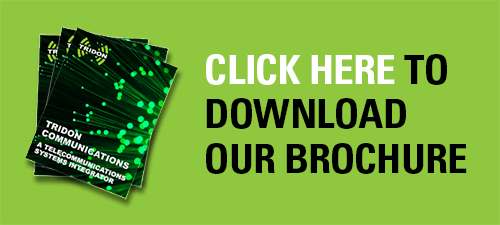
The field of communication has witnessed remarkable advancements over the years in Western Canada with digital technology playing a pivotal role in revolutionizing how businesses exchange information. In the realm of two-way radios, the transition from analog to digital technology has brought forth a plethora of benefits, as well as certain trade-offs.
This article provides an in-depth analysis of the distinctions between digital and analog two-way radios, shedding light on their respective advantages and disadvantages.
Digital Two-Way Radios - Definition and Functionality
Advantages of Digital Radios
Explore the multitude of benefits that digital two-way radios bring to modern communication landscapes, revolutionizing clarity, range, and data capabilities in Edmonton and Calgary Alberta.
Enhanced Audio Quality
One of the most prominent advantages of digital two-way radios is their superior audio quality. The digital encoding and decoding process minimizes signal degradation and background noise, resulting in crystal-clear voice communication. This is beneficial in noisy environments or situations where communication clarity is crucial.
Improved Coverage and Range
Digital radios tend to offer better coverage and range compared to their analog counterparts. This is primarily due to their ability to maintain a strong and clear signal over longer distances. As a result, digital radios are well-suited for use in large areas or challenging terrains.
Data Transmission Capabilities
Digital radios go beyond traditional voice communication by enabling the transmission of data packets. This feature proves invaluable in scenarios where real-time information sharing is essential, such as sending text messages, location data, or even images. It also opens the door for future innovations in radio communication.
Disadvantages of Digital Two-Way Radios
While digital two-way radios offer a range of benefits, it’s crucial to delve into their potential disadvantages to make well-informed communication decisions.
Initial Cost and Equipment Investment
While digital technology offers many advantages, the initial cost of acquiring digital two-way radios and associated equipment is generally higher compared to analog systems. This includes the radios themselves, compatible accessories, and any required software licenses. This upfront investment can be a deterrent for organizations with budget constraints.
Complexity of Operation
Digital radios often come with more advanced features and settings, which can lead to a steeper learning curve for users unfamiliar with the technology. The increased complexity can result in longer training periods and potential difficulties in effectively using the radios, especially in high-stress situations.
Analog Two-Way Radios - Definition and Functionality
Analog two-way radios have been a staple of communication for decades. They operate by converting voice signals into electrical signals that are then transmitted over radio frequencies. Analog radios use Very High Frequency (VHF) or Ultra High Frequency (UHF) to transmit information.
Advantages of Analog Radios
Delve into the enduring strengths of analog two-way radios, where straightforward operation and cost-effectiveness combine to deliver reliable communication solutions for various industries.
Simplicity and Familiarity
Analog radios are renowned for their straightforward operation, making them easy to use even for individuals with minimal technical expertise. The intuitive controls and simple interface contribute to quick adoption and efficient communication.
Cost-Effectiveness
Analog radios are generally more cost-effective to acquire and maintain than their digital counterparts. This affordability makes analog radios an attractive option for small businesses or organizations with limited resources.
Wide Compatibility
Analog radios are inherently compatible with a broad range of legacy radio equipment. This compatibility is advantageous in situations where seamless communication with older systems or different radio models is required.
Disadvantages of Analog Two-Way Radios
While analog two-way radios have stood the test of time, it’s essential to examine their potential drawbacks to make informed decisions about communication solutions.
Limited Audio Quality and Clarity
Analog radios are prone to signal degradation, leading to reduced audio quality, especially over long distances or in environments with high levels of interference. This limitation can hinder effective communication, particularly in noisy or challenging settings.
Vulnerability to Interference
Analog radios are more susceptible to interference from external sources, such as other electronic devices or natural phenomena. This susceptibility can result in disrupted communication and decreased reliability, particularly in areas with heavy electromagnetic activity.
A Comparative Analysis – Analog Radio vs Digital Radio
Explore the distinctions between digital vs analog radios, unveiling their unique features, strengths, and limitations to facilitate informed communication technology choices.
Coverage and Range
Digital radios have an edge in terms of coverage and range due to their error correction mechanisms, which enable clearer communication over greater distances. Analog radios, while suitable for shorter distances, may experience signal degradation and limited range.
Audio Quality
Digital radios offer superior audio quality with reduced background noise and signal distortion. Analog radios, on the other hand, may suffer from diminished audio clarity, especially in noisy environments.
Data Transmission
Digital radios excel in data transmission capabilities, enabling the exchange of various types of information beyond voice communication. Analog radios lack this functionality, restricting them to voice-only communication.
Cost Considerations
Analog radios are more budget-friendly in terms of initial acquisition and maintenance costs. Digital radios, while offering advanced features, come with a higher upfront investment and potential ongoing expenses related to software updates and licenses.
Contact Tridon Communications Today
The choice between digital and analog technology boils down to careful consideration of specific needs and priorities. Digital radios offer unparalleled audio quality, extended coverage, and data transmission capabilities, but come at a higher initial cost and increased complexity of operation. Analog radios, on the other hand, provide simplicity, familiarity, and cost-effectiveness, albeit with limitations in audio clarity, range, and data capabilities.
To make an informed decision tailored to your unique requirements, reach out to one of our experts at Tridon Communications today. Our experienced team is dedicated to helping you make informed decisions and implement the most suitable communication solutions for your organization’s needs.



